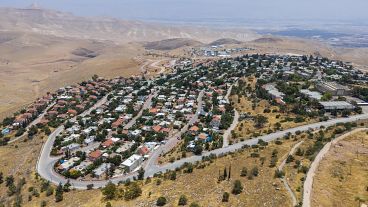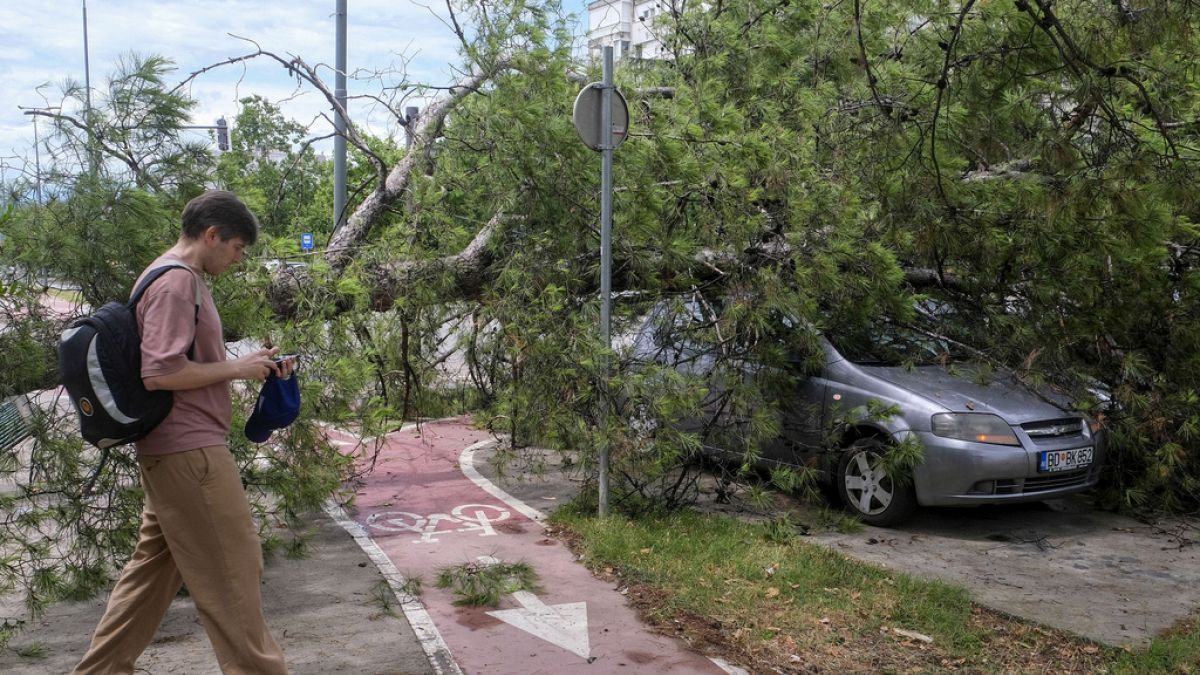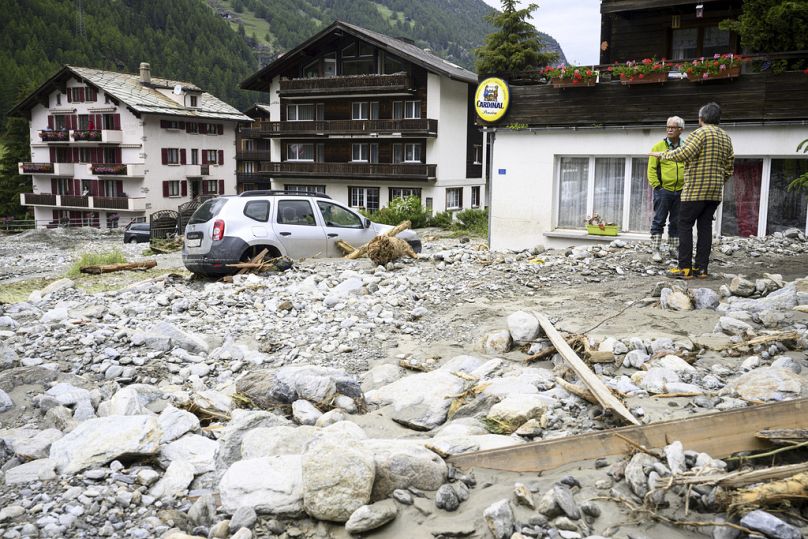Heavy midweek rains — and even egg-sized hailstones — lashed the Western Balkans overnight, leading to two deaths in Montenegro and damaged infrastructure across the region.
Two people were killed after a powerful storm swept through Slovenia, Bosnia, Serbia and Montenegro on Tuesday morning.
The torrential weather came after days of sizzling temperatures, damaging houses, pulling out trees, and flooding streets, according to officials, sending temperatures plummeting.
The extreme weather in Eastern Europe comes after a heavy storm in Switzerland and northern Italy caused extensive flooding and landslides, leaving at least four people dead, according to local authorities.
One worker died at a construction site in the Montenegrin coastal town of Čanj, while another person died from a lightning strike in Luštica, local media reported.
Heavy rain, hail and strong winds tore through Slovenia on Monday before pushing east to pummel Croatia, Bosnia, Serbia and finally Montenegro on Tuesday morning.
Footage from the Balkan region showed rooftops and facades poked with holes from hail, trees falling on cars and roads turning into rivers in Serbia's capital Belgrade and other cities.
Climate change to blame
Experts say human-induced climate change has brought wild weather swings, increasingly unpredictable storms and heat waves.
Authorities in Slovenia said emergency teams responded to dozens of calls while egg-sized hail and winds destroyed car windshields and damaged power lines, homes, gardens, and farms.
In neighbouring Croatia, the eastern part of the country was hit hardest while some 1,000 firefighters joined emergency teams elsewhere. A fire broke out when lightning hit a house in the village of Bošnjaci.
The storm in northwestern Bosnia left several villages without electricity, and cars and homes were damaged throughout the country.
Belgrade Mayor Aleksandar Šapić said storms and floods were a “new weather reality,” but critics blamed the problems on poor maintenance of drainage systems and rampant construction without updating infrastructure.
One person was pulled out of a car unharmed after a tree fell on it in the northern Serbian town of Beočin, police said.
One in eight Europeans live in an area at risk of flooding, according to the latest report by the European Environment Agency, which analysed the impact of climate change on the water cycle.
In the last 40 years, violent storms have claimed more than 5,582 victims, and the danger remains high.
In recent weeks, Germany, Turkey, Spain, Cyprus, and France have seen record levels of rainfall, disrupting daily services and causing multiple casualties.













